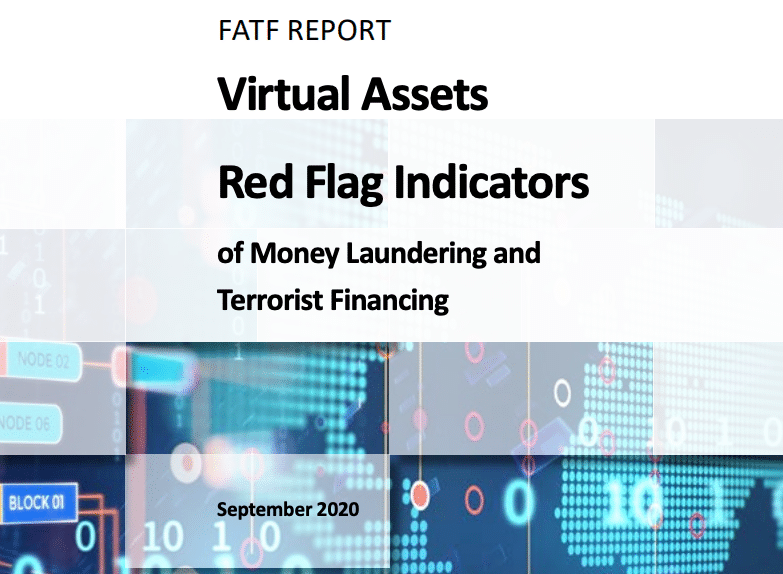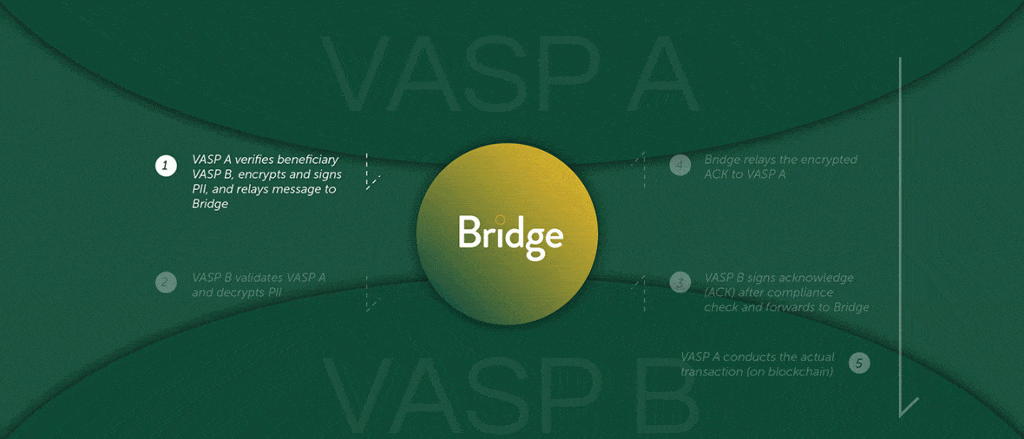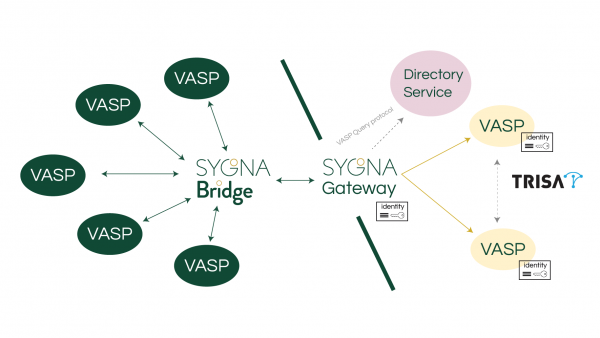Table of Contents
- Overview (TL;DR)
- Who is the FATF Virtual Asset Red Flag report for?
- How will it help combat money laundering via crypto?
- What key red flag indicators are covered?
- What does FATF consider to be “red flag” suspicious transactions?
Overview (TL;DR)
The Financial Action Task Force has published a new anti-money laundering (AML) report on red flag indicators on virtual asset transactions on 14 September 2020, with 3 accompanying handout guides for the private and public sector.
The red flag indicators aim to help authorities, the private sector and reporting entities detect and ascertain whether virtual assets are being misappropriated to launder the proceeds of criminal activities.
According to the statement “Virtual Assets Red Flag Indicators of Money Laundering and Terrorist Financing,” (ML/TF), the FATF compiled its “red flag indicators” after analyzing over one hundred case studies shared by jurisdictions in its Global Network of over 200 countries since 2017.
This comes as a responsive measure to combat the exploitation of the relative anonymity provided by virtual asset technology by criminals to facilitate the laundering of illicit proceeds from the likes of drug dealing, arms smuggling, fraud, cyber attacks, tax and sanctions evasion, human trafficking and child pornography.
The FATF report also details 13 case studies from the United States, South Africa, South Korea, Czech Republic, Cayman Islands and more as examples.
The FATF’s red flag indicator report on virtual assets comes after its industry-reforming June 2019 FATF guidance for a Risk-Based Approach to Virtual Assets and Virtual Asset Service Providers, which promulgated the FATF Travel Rule, as well as its recent June 2020 12 Month Review – Revised FATF Standards on Virtual Assets and VASPs.

Who is the FATF Virtual Asset Red Flag report for?
The FATF’s 3 handout reports target the public and private sector as follows:
- Virtual Assets Red Flag Indicators for Financial & Non-Financial Sectors
- Virtual Assets Red Flag Indicators for Virtual Asset Service Providers
- Virtual Assets Red Flag Indicators for the Public Sector
Private Sector:
The report and handouts will help virtual asset service providers (VASPs), financial institutions (FIs), and designated non-financial businesses (DNFB) and professions, and other reporting entities to detect and report suspicious transactions.
Public Sector
Moreover, for financial intelligence units, law enforcement agencies, prosecutors and regulators it will provide actionable data to analyze suspicious transaction reports (STRs) and track compliance with anti-money laundering and counter-terrorist financing controls.
How will the report help to combat virtual asset money laundering?

These two publications will help the aforementioned parties achieve the following 5 outcomes:
- how to understand the money laundering and terrorist financing risks of virtual assets,
- how to license and register the sector,
- actions that corporate sectors need to take to know information about their customers
- how to store this information securely
- how to detect and report suspicious transactions.
In addition, the FATF’s red flag report should also help entities apply a risk-based approach (RBA) to their Customer Due Diligence (CDD) regime, helping them ascertiain who their clients and the beneficial owners are, understanding the nature and purpose of the business relationship, as well as where the funds originate from.
This report complements the FATF guidance for a Risk-Based Approach to Virtual Assets and Virtual Asset Service Providers (June 2019), which promulgated the FATF Travel Rule.
What key red flag indicators are covered?
Some of the key indicators covered in the report include:
- Technological features that increase anonymity – such as the use of peer-to-peer exchanges websites, mixing or tumbling services or anonymity-enhanced cryptocurrencies
- Geographical risks – criminals can exploit countries with weak, or absent, national measures for virtual assets
- Transaction patterns – that are irregular, unusual or uncommon which can suggest criminal activity
- Transaction size – if the amount and frequency has no logical business explanation
- Sender or recipient profiles – unusual behaviour can suggest criminal activity
- Source of funds or wealth – which can relate to criminal activity
What does FATF consider “red flag” suspicious transactions?

According to the regulator, suspicious transactions can be considered as follows:
- multiple high-value transactions in short succession, such as within a 24-hour period; to a new or previously inactive account;
- transactions to multiple accounts, especially ones registered or operated in a different country or jurisdiction;
- quick deposit & withdrawal from an exchange;
- accepting funds suspected as having been stolen or fraudulent;
- a large first deposit, while the amount funded is inconsistent with the user’s profile; trading the entire balance, or withdrawing the entire balance off the platform; frequent transfers in a certain period of time to the same account by more than one person/large amounts or from the same IP address;
- moving a digital asset that operates on a public, transparent blockchain, such as Bitcoin, to a centralized exchange and then immediately trading it for a privacy coin;
- the use of decentralized/unhosted, hardware or paper wallets to transport assets across borders;
These indicators do not constitute a full list though but rather “elements contributing to a bigger overall picture of potential money laundering or terrorist financing risk and it is important that the indicators (or any single indicator) not be viewed in isolation.”
Written by Werner Vermaak
About CoolBitX and Sygna Bridge
CoolBitX’s Sygna Bridge is a first-to-market travel rule solution and alliance network that is live and being used by our VASP partners to share compliant originator and beneficiary transmittal information.

Sygna Bridge completed a successful production test report (Big 4 audited) earlier this year, which was presented to the FATF Contact Group in May 2020. Sygna Bridge now also supports the IVMS101 messaging standard.
CoolBitX has signed MoUs with over VASPs in Asia, North America, Europe and Africa and recently joined forces with Elliptic in a combined quest to help crypto companies comply with the FATF Standards.
For enquiries on the FATF Travel Rule and our Sygna Bridge solution for VASPs, please contact us at info@sygna.io.
Disclaimer: CoolBitX provides these blog posts for general educational purposes only. Information on this blog does not constitute professional legal or financial advice and should not be considered as such. The author or company may update the information on this article at any time without prior notice and do not guarantee the work to be up to date and accurate. To the best of our knowledge the information provided here is factual at the time of writing.


